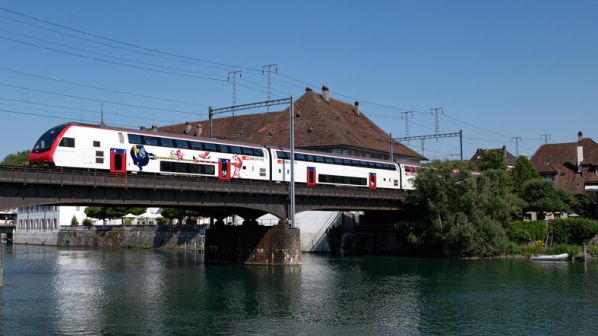Rail passenger traffic has doubled while freight tonne-km has increased by 40% since 1980, and passenger traffic is forecast to grow by 51% by 2050 and double again in certain regions such as between Zürich and Winterthur and the arc around Lake Geneva. Freight is expected to grow by 45%. The greatest traffic increase is forecast on the east-west axis with 18% growth in passenger traffic and 33% rise in freight traffic.
Around 200 schemes of varying size to increase capacity on the network are planned. These include:
- a new line between Neuchâtel and La-Chaux-de-Fonds
- the 8km Brütten tunnel between Dietlikon and Winterthur
- the 9.4km Zimmerberg II base tunnel between Zurich and Thalwil
- upgrading of the Loetschberg base tunnel
- upgrading between Yverdon, Lausanne and Geneva,
- improvements in eastern Switzerland and the St Gallen junction, and
- the construction of 14 new stations.
In addition, platforms will be lengthened, and access improved at nine stations including Basle SBB, Neuchâtel, Nyon, Olten and Zürich main station. Additional tracks will be provided for freight trains at five locations.
The plan will come into force on January 1 2020 and will be funded through the Rail Infrastructure Fund (FIF).
High frequency
Completion of the work will allow the introduction of 15-minute interval services on the Zürich S-Bahn, the Geneva RER, and numerous lines across the network including Geneva - Lausanne, Neuchâtel - La-Chaux-de-Fonds, Bern - Fribourg, Zürich - Frauenfeld, and Zürich - Lucerne. High-frequency services with trains running at up to 7.5 minute intervals are planned in the Bern and Zürich areas.
For freight, express paths will be optimised, and additional paths provided on key sections of the network such as Basle - Olten - Bern - Lausanne - Geneva and Zürich - Lugano.

